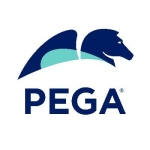What is our primary use case?
It's primarily for cloud-to-cloud application integrations.
We are moving the data in Redshift that is from Amazon.
Our primary use case is for data integration, data applications, and data migrations from SAP data to data in Amazon Redshift.
What is most valuable?
The most valuable features are Big Data, integration, and high volume data transfers.
SnapLogic is an Artificial intelligence-based solution.
SnapLogic is a low-code development tool.
The amount of coding required is very low and the development time is low when designing the pipelines.
It's a fast learning solution.
With SnapLogic, you can cut down the delivery times and send high volumes.
What needs improvement?
The stability can be improved.
The problem with Snaplogic is convincing the management. SnapLogic is a technical product, which could be the reason that convincing the management is so difficult.
High-volume integration and the number of dependencies should be lower.
The EPA requires a lot of customization. Many other solutions are programming-oriented, which require a lot of customization.
The support is the most important improvement they could make. In the next release, I would like better support, more online tutorials, online certification courses, and better marketing to help, geared to large businesses and showing them how this solution can meet their requirements.
Also, more integration would be helpful.
For how long have I used the solution?
I have been using SnapLogic for two years.
What do I think about the stability of the solution?
When it comes to stability, we have experienced some issues where it says it is not available.
What do I think about the scalability of the solution?
SnapLogic is scalable. They have the load increase and it is able to spin the resources and get the data done.
We have four users in our organizations using this solution.
How are customer service and technical support?
We won't get help from technical support. We have local support. You won't get any help from the internet.
You have to dig through and identify the issues.
The support team is not very responsive.
Which solution did I use previously and why did I switch?
Previously, we were using TIBCO.
How was the initial setup?
The initial setup was easy and it took one to two hours to build and deploy it.
It only takes one engineer to maintain this solution.
What about the implementation team?
I completed the implementation myself.
What's my experience with pricing, setup cost, and licensing?
SnapLogic is not expensive. It's reasonably priced.
Which other solutions did I evaluate?
When you compare SnapLogic with other solutions it can handle higher volume transactions, two or three gigabytes, and even more than 10 terabytes.
What other advice do I have?
I think the master data management, use-cases, and high-volume data transfers are good. Each product has its own strengths and weaknesses. Solutions such as Mulesoft will focus heavily on the engineering soft bundle.
If SnapLogic meets the needs and requirements of the use cases and the business, then I would recommend this solution to anyone who is interested in using it.
I would rate SnapLogic a seven out of ten.
Which deployment model are you using for this solution?
Hybrid Cloud
Disclosure: My company does not have a business relationship with this vendor other than being a customer.















